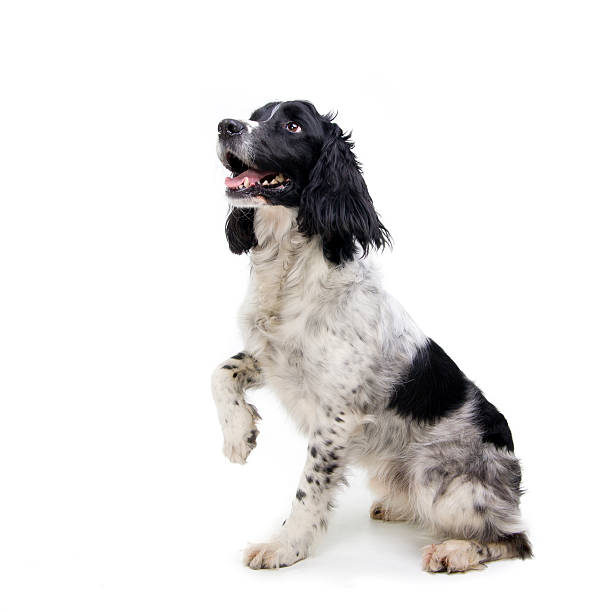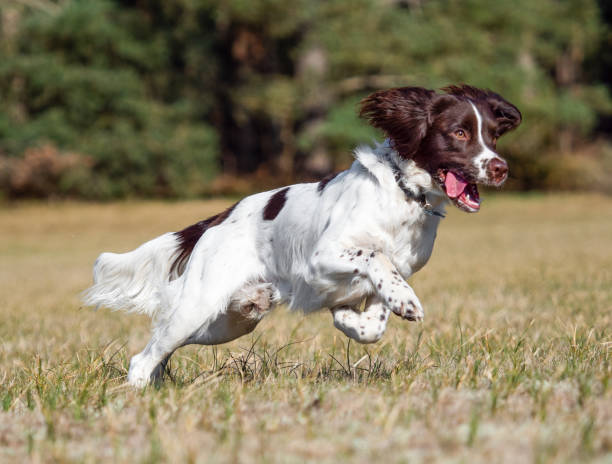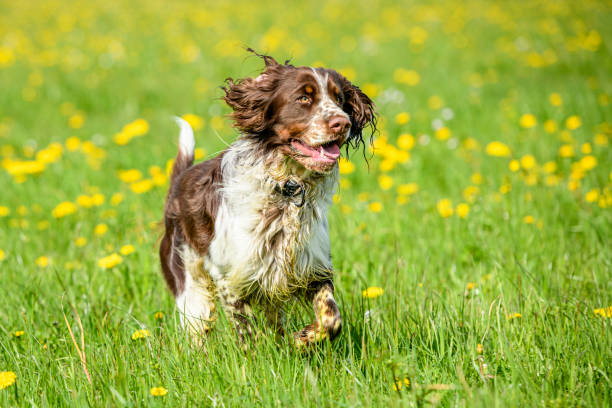English Springer Spaniel

Breed History:
The English Springer Spaniel is a versatile and energetic breed with a rich hunting heritage. Originating in England, it was developed as a gun dog specifically trained to "spring" game—flush birds into the air for hunters. The breed is believed to have evolved alongside other spaniel types as early as the 1500s, with its modern form becoming distinct in the 19th century. English Springer Spaniels were prized for their stamina, intelligence, and keen sense of smell, making them exceptional field dogs.
Over time, two strains emerged: the field-bred Springer, which excels in hunting and agility, and the show-bred Springer, known for its appearance and temperament. Despite this divide, the breed remains beloved for its cheerful personality, affectionate nature, and trainability, making it equally suited for active families and hunting companions.
|
Gender |
Height |
Weight |
|
Male |
48–56 cm |
20–25 kg |
|
Female |
46–51 cm |
18–23 kg |
Size – Medium
Life Expectancy: 12–14 years

Breed Appearance:
The English Springer Spaniel is a medium-sized, athletic dog with a compact and well-balanced frame. Its expressive eyes, long ears, and slightly domed head give it a friendly and alert expression. The coat is moderately long and either flat or wavy, with feathering on the chest, legs, ears, and underside. Common coat colors include liver and white, black and white, or tricolor combinations, often with ticking or roaning.
Springers have strong, muscular bodies built for endurance, with a deep chest and straight limbs. Their tails are traditionally docked in some countries, though in many places they are left natural. The Springer’s graceful yet powerful movement showcases its working origins and ability to cover ground quickly and efficiently.
Breed Type – Family/Guard:
The English Springer Spaniel is a joyful, affectionate breed known for its friendliness, intelligence, and boundless enthusiasm. It thrives in active households and excels in dog sports such as agility, obedience, and tracking. Originally bred for hunting, it has retained its love of the outdoors and natural retrieving instincts.
Though naturally alert and attentive, Springers are not aggressive and make poor guard dogs. They are highly social and crave human interaction, often forming close bonds with all members of the family. Their cheerful disposition and patience make them wonderful companions for children and other pets, especially when properly socialised from an early age.

Training:
The English Springer Spaniel is a highly trainable breed thanks to its eagerness to please and sharp intelligence. It learns quickly and responds well to positive reinforcement methods, such as treats, praise, and play. Because of its energetic nature, training should begin early and include plenty of mental stimulation to prevent boredom.
Obedience training, socialisation, and structured activities are key to helping the Springer develop into a well-mannered adult. These dogs can be sensitive, so a gentle, consistent approach works best. Their alertness and responsiveness make them excellent candidates for advanced training, such as scent detection, therapy work, or competitive dog sports.
Health & Care:
English Springer Spaniels are generally healthy and long-lived, but like all breeds, they are prone to specific hereditary conditions. Common health issues include hip dysplasia, elbow dysplasia, progressive retinal atrophy (PRA), and ear infections due to their floppy ears. Some lines are also predisposed to a condition known as Springer Rage Syndrome, a rare but serious behavioral disorder.
Routine veterinary care, regular exercise, and a balanced diet are essential for maintaining health. It's important to monitor their ears weekly for signs of infection and keep them clean and dry. Responsible breeders screen for hereditary issues, making health testing a key factor when choosing a puppy.

Living Conditions:
The English Springer Spaniel adapts well to various living environments, provided it receives sufficient daily exercise and mental engagement. While it can live in apartments, it thrives in homes with yards or access to open spaces where it can run and explore. A bored or under-exercised Springer may become destructive or overly excitable.
This breed prefers close human contact and does best in households where it is not left alone for long periods. It enjoys being part of daily activities, whether it's hiking, playing fetch, or simply lounging with the family. Springers are not suited to sedentary lifestyles and require active owners who can meet their physical and emotional needs.
Exercise:
As a working and sporting breed, the English Springer Spaniel needs plenty of daily exercise to stay physically and mentally balanced. At least 1–2 hours of activity per day is recommended, including walks, runs, play sessions, and mentally stimulating games like hide-and-seek or scent trails.
They love swimming, retrieving, and any activity that mimics their hunting roots. Without adequate exercise, Springers may become anxious or develop unwanted behaviors. Consistent exercise not only keeps them healthy but also strengthens their bond with their owners and satisfies their instinctual drive to work and explore.
Grooming:
The English Springer Spaniel has a medium-length double coat that requires regular maintenance to stay clean and mat-free. Brushing 2–3 times a week helps remove loose hair and prevents tangles, especially in feathered areas like the ears, legs, and chest. During seasonal shedding, more frequent grooming may be necessary.
Bathing should be done every 4–6 weeks or as needed, depending on activity levels. The breed is prone to ear infections due to its long ears, so weekly ear checks and cleanings are essential. Regular nail trimming, dental care, and occasional professional grooming will keep the Springer looking and feeling its best.

Advantages:
-
Friendly, affectionate, and eager to please, making it ideal for families
-
Highly trainable with a strong desire to work and learn
-
Excellent with children and generally good with other pets
-
Adaptable to various lifestyles if given sufficient activity
-
Strong natural instincts for dog sports, hunting, and obedience
-
Low grooming maintenance compared to some long-haired breeds
Disadvantages:
-
High energy levels require consistent exercise and engagement
-
Can become destructive or vocal if bored or under-stimulated
-
Prone to ear infections and hereditary eye/joint issues
-
Needs regular grooming to prevent mats and tangles
-
May suffer from separation anxiety if left alone too long
-
Sensitive to harsh correction; requires a gentle, consistent training style

